
Guests
- Michael Steven Smithco-author of Who Killed Che? How the CIA Got Away with Murder. He is New York City-based attorney and a board member of the Center for Constitutional Rights.
- Michael Ratnerco-author of Who Killed Che? How the CIA Got Away with Murder. He is president emeritus of the Center for Constitutional Rights in New York City and past president of the National Lawyers Guild.
Michael Ratner and Michael Steven Smith are the co-authors of a new book about the U.S. role in the killing of Cuban revolutionary, Ernesto “Che” Guevara. Born in Argentina in 1928, Che rose to international prominence as one of the key leaders of the 1959 Cuban Revolution that overthrew U.S.-backed dictator Fulgencio Batista. After a period in the new Cuban government leadership, Che aimed to spark revolutionary activity internationally. On October 8, 1967, he was captured by Bolivian troops working with the CIA. He was executed one day later. In their book, “Who Killed Che?” Ratner and Smith draw on previously unpublished government documents to argue the CIA played a critical role in the killing. “The line of the [U.S.] government was that the Bolivians did it, we couldn’t do anything about it. That’s not true,” Smith said. “This whole operation was organized out of the White House by Walt Whitman Rostow. And the CIA, by this time, had become a paramilitary organization.” On Che’s significance, Ratner says Che became “a symbol for revolutionary change… He still remains, of course, that today. If you go to Occupy Wall Street, if you go to Tahrir Square, you will see people who are wearing Che T-shirts, because they understand that their obligation, their necessity, is to take on the 1 percent. And that’s what Che was about. And that’s why I think he remains such a hero for people in the streets today.” [includes rush transcript]
Transcript
AMY GOODMAN: Michael Ratner and Michael Steven Smith are the co-authors of a book about the U.S. role in the killing of Che Guevara, the Cuban revolutionary. Born in Argentina in 1928, Che rose to international prominence as one of the key leaders of the 1959 Cuban Revolution that overthrew the dictator, Fulgencio Batista. After a period in the new Cuban government leadership, Che aimed to spark revolutionary activity internationally. In ’65, he led a secret Cuban operation aiding and training rebels in the Congo. Speaking to the United Nations the year before, Che Guevara had invoked the legacy of Patrice Lumumba, the first democratically elected leader of what is now known as the Democratic Republic of Congo, who was killed with the backing of the United States.
CHE GUEVARA: [translated] For it is the very essence of imperialism to turn men into wild, bloodthirsty animals determined to slaughter, kill, murder and destroy the very last vestige of the image of the revolutionary or the partisan in any regime that they crush under their boots because it fights for freedom.
AMY GOODMAN: After the Congo, Che Guevara went to Bolivia, helping to lead an uprising against the U.S.-backed government there. On October 8th, 1967, he was captured by Bolivian troops working with the CIA, executed a day later.
In their book, Who Killed Che? How the CIA Got Away with Murder, Michael Ratner and Michael Steven Smith draw on previously unpublished government documents to argue the CIA played a critical role in Che Guevara’s death.
Michael Steven Smith, what exactly did you learn?
MICHAEL STEVEN SMITH: Well, a lot of information has come to light recently: four excellent biographies of Che, the documents that Michael took the initiative to get under the Freedom of Information Act. Half of our book are these documents.
The line of the government was that the Bolivians did it, we couldn’t do anything about it. That’s not true. This whole operation was organized out of the White House by Walt Whitman Rostow. And the CIA, by this time, had become a paramilitary organization. They were told, “We’ll give you the broad outlines on what to do, but don’t tell the president, because we don’t want to embarrass him.” And the indication was: get Che. And that’s what was organized right out of the White House.
We have a quote from Jorge Castañeda, the Mexican diplomat and historian who wrote one of these biographies, saying that he interviewed Gustavo Villoldo. This was an artistic representation of Villoldo, who I’ll tell you about. And Villoldo said to him, “When I got off the plane in La Paz, I went right to the palace, where Barrientos, the U.S.-installed dictator, sat.” And he said to Barrientos, “We’re going to supply you with everything you need to get Che. When you get him, we want him killed.” And Barrientos said, “I give you my word, as president of Bolivia, that if we catch him, we’ll kill him.” That’s only one of the things in the book.
The CIA had tried to kill Che before. They tried to kill Castro 602 times. They killed Lumumba, as you indicated. A CIA agent drove around with the body of Lumumba in his trunk. It’s Murder Incorporated down there. Why? Because of regime change. Cuban Revolution took the 99 percent, and they became the 1 percent. And the 1 percent of the Cuban oligarchy went to Miami. And what they want to do, and what they still want to do, and why they have the embargo, is they want to take that 1 percent and put them back in and restore capitalist property relations in Cuba.
AMY GOODMAN: The significance of Che Guevara, Michael Ratner?
MICHAEL RATNER: Well, he was obviously incredibly significant for the Cuban Revolution, for the struggles in Latin America. He was so significant that, of course, the U.S. started to topple governments shortly after—during that period of the ’60s. And, of course, when you played the Víctor Jara song, it was really meaningful to me, because Víctor Jara was picked up by—during the Chilean coup, which was backed by the United States against Allende, and was murdered in the stadium. And so, Che became, and the Cuban Revolution, a symbol for revolutionary change in Latin America. That was then.
He still remains, of course, that today. If you go to Occupy Wall Street, if you go to Tahrir Square, you will see people who are wearing Che T-shirts, because they understand that their obligation, their necessity, is to take on the 1 percent. And that’s what Che was about. And that’s why I think he remains such a hero for people in the streets today.
AMY GOODMAN: Why did he go to Bolivia? I just want to warn you, we have about a minute to go. But why he went to Bolivia, and what most surprised you in the information that you got under the Freedom of Information Act?
MICHAEL RATNER: Well, he went to Bolivia because he believed that the Cuban Revolution could not survive unless other countries in the world, particularly in South America, also became revolutionary. He also believed that Bolivia was completely ripe for revolution. It had a couple of hundred changes in government in a period of very—you know, in a period of 200 years. It had a huge peasant population that was exploited by the United States. They had supported all the dictatorships. He, of course, wanted to make a revolution, as well, or be part of it, in his home country of Argentina. He looked at the spine of Latin America as critical to revolutionary movements. It had been under the heel of the United States really since the Monroe Doctrine and before.
AMY GOODMAN: And how you know CIA was involved?
MICHAEL RATNER: Well, the CIA here, this is—I mean, what’s interesting in the book is the documents we got. We got one from Walt Whitman Rostow that essentially said—
AMY GOODMAN: Who was working for president—
MICHAEL RATNER: Right, the national security adviser for President Johnson. He said all the documents he shoveled in to Johnson were from the CIA, the CIA’s reporting. “We want the fingerprints. We think Che did this. We think Che did that.” So it all comes out of the CIA. Rostow says the killing is stupid. But then you read Rostow’s memo, and you realize the first thing the United States wanted was Che dead, because that was the way to end revolutionary fervor in Latin America and in the world.
AMY GOODMAN: We’re going to do part two of this conversation after the broadcast, post it at democracynow.org. Michael Ratner, Michael Steven Smith, authors of Who Killed Che? How the CIA Got Away with Murder.

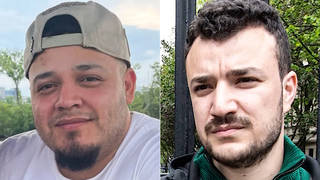

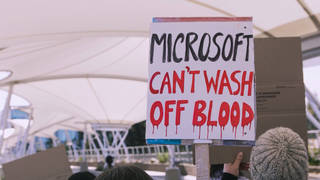
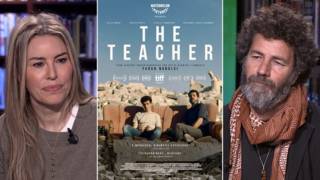





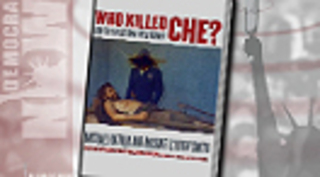
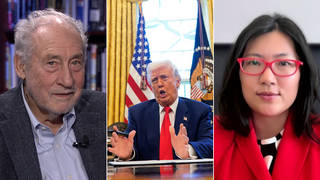
Media Options